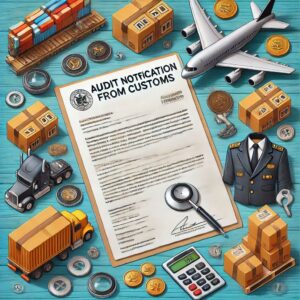Todays' Hassle-Free Shipping
Cargo transport encompasses road, rail, sea, air, pipeline, and multimodal options for moving goods, each with specific advantages. Trucks and vans offer flexibility for short to medium distances, while trains excel in long-distance bulk transport. Ships and container vessels specialize in international cargo with standardized loading. Cargo planes ensure swift delivery, albeit at a higher cost, while pipelines efficiently transport fluids and gases. Intermodal transport optimizes logistics by combining modes, considering factors such as cargo type, distance, speed, cost, and environmental impact. Effective planning involves selecting suitable transport modes precisely to meet supply chain requirements.
Subscribe to the Ex-works24/7 newsletter
Tips to Ensure a Hassle-Free Shipping
Shipping can be a daunting task, whether you’re sending out a personal package or managing a business’s inventory. To make sure your items reach their destination safely and efficiently, here are ten essential tips to consider before shipping:
1. Double-Check the Destination Address – One of the most common causes of shipping delays or misdeliveries is an incorrect address. Before you hit that “ship” button, verify that the destination address is accurate. Include details such as apartment numbers or suite information, and make sure the address format is correct for the shipping carrier.
2. Choose the Right Shipping Carrier – Different shipping carriers offer various services, delivery times, and costs. Evaluate your options based on your needs—whether you need expedited shipping, tracking services, or special handling. Major carriers like FedEx, UPS, and DHL each have their strengths, so choose one that aligns with your requirements.
3. Weigh and Measure Your Package – Shipping costs are often determined by the weight and dimensions of your package. Use a scale and measuring tape to get accurate measurements before shipping. This helps avoid unexpected costs and ensures you’re selecting the most cost-effective shipping option.
4. Select the Proper Packaging – The packaging you choose plays a critical role in protecting your items. Use sturdy boxes or envelopes, and ensure your items are cushioned with packing materials such as bubble wrap or packing peanuts. Proper packaging prevents damage and reduces the risk of your package being returned.
5. Consider Insurance – For high-value items, purchasing shipping insurance can provide peace of mind. This protects you against loss or damage during transit. Check the carrier’s insurance options and coverage limits, and decide if additional insurance is necessary based on the value of your items.
6. Attach Shipping Labels Clearly – Make sure that shipping labels are printed clearly and affixed securely to the package. Labels should be placed on the largest surface of the package and free from any wrinkles or folds that could obscure the barcode. This ensures smooth scanning and accurate delivery.
7. Include a Return Address – Including a return address on your package is crucial in case there are any delivery issues. This allows the carrier to return the package to you if it cannot be delivered to the recipient. Ensure the return address is accurate and clearly visible.
8. Prepare Customs Documentation (For International Shipments) – If you’re shipping internationally, you’ll need to complete customs documentation. This typically includes a commercial invoice, a packing list, and any required certificates. Accurately declare the contents and value of the package to avoid customs delays.
9. Track Your Shipment – Most carriers offer tracking services that allow you to monitor your package’s journey. After shipping, keep an eye on the tracking information to stay updated on the delivery status. This can help you address any issues promptly if they arise.
10. Plan for Delivery Times – Consider the delivery time when planning your shipment. If you’re sending gifts or time-sensitive items, factor in shipping delays, especially during peak seasons or holidays. Communicate with the recipient about expected delivery times to manage their expectations.
Understand Customs Requirements
International sea freight involves customs procedures and documentation:
- Customs Declarations: Ensure all necessary customs documents are prepared, including commercial invoices, packing lists, and bills of lading.
- Import/Export Regulations: Familiarize yourself with the import/export regulations of both the origin and destination countries. Compliance with these regulations helps avoid delays and additional costs.
Conclusion: Good customer service is a cornerstone of a hassle-free shipping experience. Provide clear communication about shipping policies, offer support for tracking inquiries, and address any issues quickly. A positive shipping experience enhances customer satisfaction and builds trust. By implementing these tips, you can simplify your shipping process and reduce stress. Whether you’re managing a business or sending a personal package, a little preparation and organization go a long way in ensuring a smooth and hassle-free shipping experience. Happy shipping!
Frequently
Asked Questions
To ensure hassle-free shipping, focus on the following key steps:
- Choose the right shipping partners: Research and select reliable couriers that align with your business needs. Compare delivery times, costs, and customer service reputation.
- Use shipping software: Automate and streamline your shipping process by using tools like ShipStation, ShipBob, or EasyShip. These platforms help manage orders, print labels, and track shipments.
- Accurate packaging: Ensure that products are securely packed using the right materials to minimize damages and shipping delays. Use custom packaging or padded mailers when necessary.
- Provide clear shipping information: Always offer customers transparent shipping options, delivery estimates, and tracking details. Communicate proactively if there are any delays.
- Plan for returns: Make returns easy for customers by offering a simple, clear return policy and ensuring you have an efficient process for handling them.
To cut shipping costs while maintaining a great customer experience:
- Negotiate rates with carriers: If your volume is high, work with your shipping partners to get discounted rates. Many carriers offer bulk pricing or discounts based on shipping frequency.
- Offer flat-rate shipping: Consider offering flat-rate shipping to customers, which can simplify pricing and help you manage costs more effectively.
- Use the right size packaging: Optimize your packaging by using smaller, lighter boxes that reduce dimensional weight and cut costs.
- Leverage regional carriers: Sometimes, regional or niche carriers offer more competitive rates than larger national ones, especially for shorter distances.
- Consider a fulfillment service: Partnering with a third-party fulfillment service (like ShipBob or Fulfillment by Amazon) can help you save on shipping costs through their bulk shipping rates and logistics expertise.
To avoid delays and keep deliveries on schedule:
- Track shipments: Use tracking tools provided by your shipping partners to stay updated on the progress of each delivery.
- Plan for busy seasons: During peak times (holidays, sales), plan ahead by adjusting shipping timelines, increasing inventory, and pre-scheduling shipments to avoid last-minute delays.
- Choose reliable carriers: Select couriers known for punctuality and reliability. Also, consider using services with guaranteed delivery windows, like overnight or two-day shipping options.
- Maintain inventory levels: Ensure that stock is available to fulfill orders quickly. Running out of stock can lead to backorders, which can delay shipments.
- Offer multiple shipping options: Allow customers to choose expedited shipping if they need their products urgently. This reduces the pressure on standard shipping and increases satisfaction.
Handling international shipping can be tricky, but with the right approach, it can be streamlined:
- Understand customs regulations: Research and stay compliant with the customs regulations of the destination country. Ensure that all required documentation (like customs declarations) is properly filled out.
- Use international shipping platforms: Platforms like ShipBob, EasyShip, and DHL provide tools to simplify international shipping by handling customs, taxes, and duties automatically.
- Consider duties and taxes: Make sure to inform customers about any duties, taxes, or customs fees they may be responsible for, to avoid surprise charges.
- Choose the right carrier for international shipments: Use reputable international couriers like DHL, FedEx, or UPS, as they offer reliable tracking, fast delivery times, and good customer service across borders.
- Offer international shipping options: Consider offering different international shipping options (standard, expedited) to cater to different customer needs and budgets.
Efficiently managing returns requires organization and a clear process:
- Create a clear return policy: Set a straightforward, easy-to-understand return policy on your website. Include details on timeframes, return methods, and any costs involved.
- Provide return labels: Make returns easier for customers by offering prepaid return labels, which can speed up the process and ensure the item is returned in good condition.
- Streamline the return process: Use automated return management systems (e.g., Returnly, Happy Returns) to handle returns, track them, and issue refunds efficiently.
- Inspect returns quickly: Set up a system to inspect returned items quickly and process refunds or exchanges promptly to maintain customer satisfaction.
- Analyze return patterns: Monitor why customers are returning products to identify any recurring issues (size, quality, etc.). Address these patterns to reduce returns in the future.
By following these steps, businesses can create a smoother, more efficient shipping and returns process that minimizes hassle for both them and their customers.




